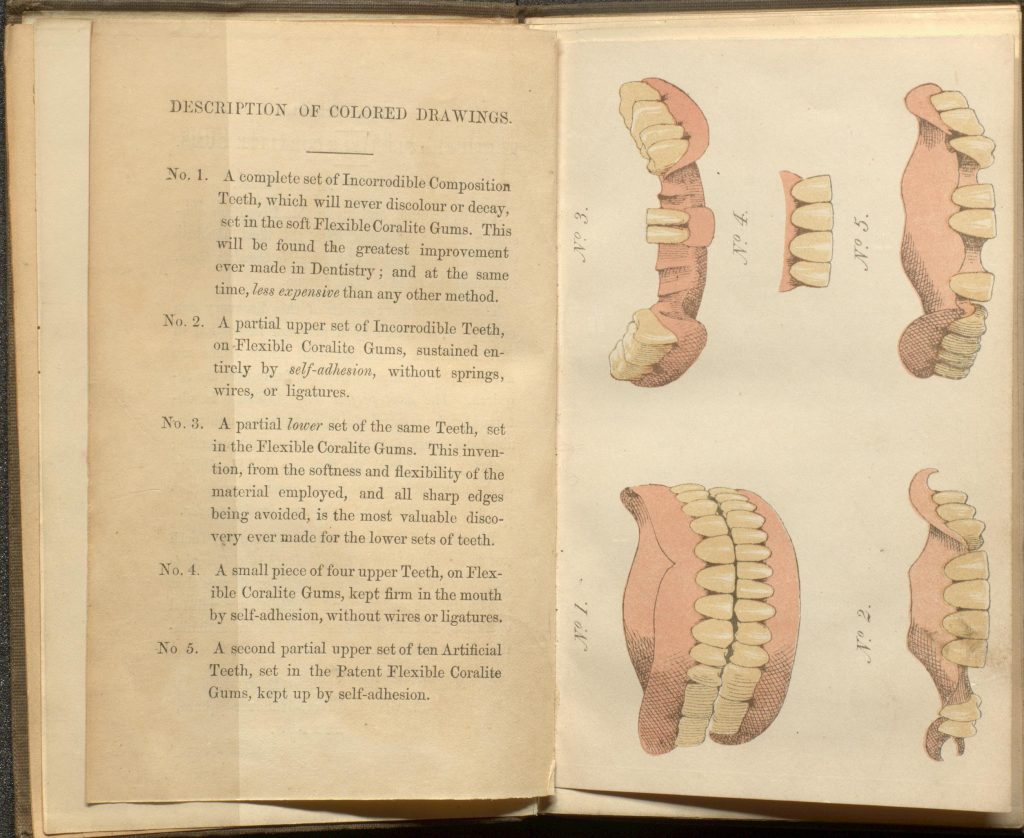July 2021 marks the centenary of the Dentists Act (1921), which established a Dental Register overseen by the Dental Board and forbade anyone not registered to practice as a dentist. Research by the British Dental Association Museum into women on the 1923 Dentists Register has identified the first registered female Liverpool graduates in Dentistry: Alice Clegg (1918), Dorothy Canning (1920), and Ellen Jones (1922).
The world they and their successors (and unregistered predecessors) trained and practised in can be seen in the collections of the Liverpool Dental School Museum, now on permanent display in the VGM’s Tate Hall. The Museum Library, incorporating the collection of the Liverpool and District Odontological Society, and many gifts from individuals associated with the School is currently being catalogued in detail, and we share some highlights below. If you haven’t been able to visit the dentist in a while, don’t worry – times and treatments have most definitely improved!
The Dental Museum Library holds about 1000 volumes from the 18th century to the 20th. One of the earliest is A practical treatise on the diseases of the teeth (London, 1778: SPEC Dental D006) by the Scottish surgeon and anatomist, John Hunter (1728-1793). This is the second part of Hunter’s A treatise on the natural history of the human teeth (1771). Both works were based on his time as a dental surgeon in the practice of James Spence after he returned from his army surgical work during the Seven Years’ War. The Dental School copy belonged to a ‘Mr Jenner’ and then to W.H. (William Henry) Waite, first Dean of Liverpool Dental School (1881-1888) and President of the British Dental Association (1910).
W.H. Waite also gave SPEC Dental D002: The history and treatment of the diseases of the teeth, the gums, and the alveolar processes, with the operations which they respectively require. To which are added, observations on other diseases of the mouth, and on the mode of fixing artificial teeth. Illustrated with copperplates (1806) by Joseph Fox (1776-1816). Fox’s works are described as the first true textbooks on dentistry for practical use, with illustrations of dental procedures and pathologies. His friend Josiah Wedgwood (1769–1843) supplied the porcelain for Fox to make artificial teeth.

Another William Henry – W.H. Gilmour (President of the BDA in 1927) gave more contemporary material to the Dental School: SPEC Dental D106.1912: Ernest Dowsett’s Dental Surgery Notes (Dental Manufacturing Co., 1912) and a collection of reports relating to the Dentists’ Act 1921. Gilmour was Warden of the Dental School 1898-1912, after its affiliation to the Faculty of Medicine of University College, Liverpool.
SPEC Dental D027: S. Maw & Son’s 1866 Catalogue of surgeon’s instruments (Tooth instruments on pages 147 to 156) is particularly relevant to the Dental Museum display in Tate Hall. It belonged to Liverpool Dental Hospital in 1866 and has instructions for ordering items from the catalogue from George Barber, a Liverpool chemist on Great George Street.
SPEC Dental D081 is a reminder of the need for the professionalization consolidated by the 1921 Act. On the loss of teeth and loose teeth and on the best means of restoring them was published by Thomas Howard, Dentist in 1860 – the year the Liverpool Dental Hospital (originally Liverpool Dispensary for Diseases of the Teeth) started as both hospital and “School of Practical Dental Surgery”. Its coloured illustration showing ‘before’ and ‘after’ advertises Howard’s “new, original, and invaluable invention” of “a Flexible Coralite Gum” which “will be found the greatest improvement ever made in Dentistry; and at the same time, less expensive than any other method”.



There is more on the history of Liverpool Dental School in the University Archive and although the Tate Hall Museum is currently closed, you can find out more about the Dental Museum online, especially the Waterloo teeth and the bicentenary of Waterloo.
